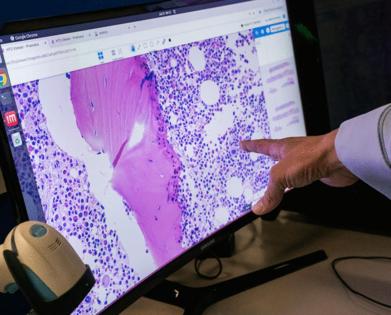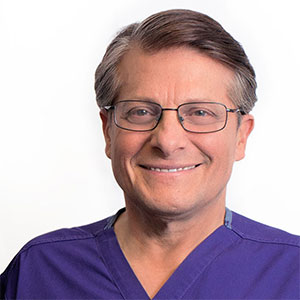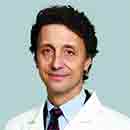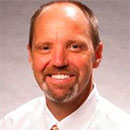Mayo, Nvidia launch AI supercomputer to diagnose diseases more quickly
Published in Health & Fitness
Mayo Clinic has collaborated with the world’s most valuable company to launch the first supercomputer in a hospital using a new AI technology that could shorten the time to diagnosis and hasten treatment of deadly diseases.
It’s the first time AI chipmaker Nvidia’s technology will be used this way in a health care setting on a large scale.
“The confluence of the [AI computing power] that we’re talking about, the data, and the clinical knowledge coming together could be kind of a once-in-a-generation opportunity to truly transform how medicine is practiced,” said Jim Rogers, CEO of the Mayo Clinic digital pathology department.
The technology will help Mayo build new AI models to make advances in clinical areas such as pathology, which focuses on diagnosing and understanding diseases. Mayo did not share the system’s cost.
Dr. Matthew Callstrom, medical director of Mayo’s Department of Strategy and leader of the generative AI program, said scientists will someday be able to build AI models around the droves of Mayo’s de-identified pathology data to help them understand high-stakes ideas such as the staging and progression of cancer.
The investment comes as Mayo Clinic revs up its broader AI strategy, including partnerships with Google, Microsoft and the genomics-focused AI company Cerebras.
Executives of the world renowned health system hope AI can relieve administrative workload and facilitate medical breakthroughs.
Matt Redlon, Mayo’s vice president of digital biology at Mayo Clinic Digital Pathology, said the system’s capabilities are three to four times stronger than Mayo’s previous technology. Rogers said the infrastructure is “rocket fuel” accelerating innovation.
“This acquisition marks a transformative leap in digital pathology and precision medicine capabilities,” David Niewolny, director of business development for health care and medical at Nvidia, said in an email.
Specifically, Niewolny added, the technology will allow Mayo to fully digitize its enormous pathology archives in hopes of revealing new insights from aggregated patient data.
The system relies on Nvidia computing infrastructure called DGX SuperPOD. It’s a large computing “cluster” that, in Mayo’s case, uses 128 high-powered chips called Blackwell graphics processing units (GPUs).
The clinic will have to reckon with environmental groups that say AI data centers add stress to the electric grid and use a lot of water. Rogers acknowledged these concerns, explaining Mayo considered sustainability in its decision making. The clinic uses air cooling technology, executives said, rather than liquid cooling.
“We’re using the most efficient resources for the right projects,” Rogers said. He added the clinic is striving to find “the most efficient way to get the best solution to the patient and to the provider as quickly as possible.”
Niewolny said the SuperPOD is designed to maximize performance per watt, which reduces the environmental footprint. The cluster ranks among the most sustainable AI systems globally, he added.
Since the early 1900s, Mayo has worked to standardize health data. In recent years, it has increased efforts to digitize records and samples, and now its AI models are analyzing them and discovering new insights.
But the process wasn’t moving fast enough.
Callstrom likened the Nvidia tech to the transition from postal mail to fax to the internet. “It’s basically that much of a leap in terms of technology and data flow,” he said.
Redlon said the technology is not the clinic’s first high-tech computing cluster, but it is the first time the clinic is using this SuperPOD, which Nvidia describes as an “AI factory.”
While many institutions rely on cloud-based access to use AI, Mayo’s decision to build and run its own cluster on site reflects both its ambition and its resources, chief AI implementation officer Micky Tripathi said.
“Very few organizations have the resources — both the financial resources but also the skill sets — to be able to say we actually want to have our own, so that we can do everything that we need to do,” he said.
Dr. Andrew Norgan, chief medical director of digital pathology, said using cloud-based systems sometimes doesn’t scale economically “if you want to be able to address very large problems and do it over a long period of time.”
Scientists will be able to use this AI supercomputer for advancements in pathology research.
Over the past seven years, the department has undergone a “revolution in the digitization of our practice,” Norgan said. Instead of looking at pathology slides under microscopes, the clinic now creates “gigapixel images of each and every slide that we make. And we make close to 3 million slides a year.”
So far, Mayo has digitized 12 million slides, said Dr. Joaquin Garcia, medical director of Mayo’s digital pathology program. The digitization will allow Mayo to build AI models to make diagnoses faster and more accurately and efficiently.
“Pathology’s gone from an analog world,” Callstrom said, “where one set of eyes will see it, to now we can actually distribute it and share it and then start to build better understanding and new capabilities on top of that.”
Norgan said humans are only able to access some percentage of the data in a slide. Combining insights from the slides with additional information from patient records can lead to better patient-care decisions, he added.
“AI is now opening up a whole new world to us,” he said.
©2025 The Minnesota Star Tribune. Visit at startribune.com. Distributed by Tribune Content Agency, LLC.










Comments